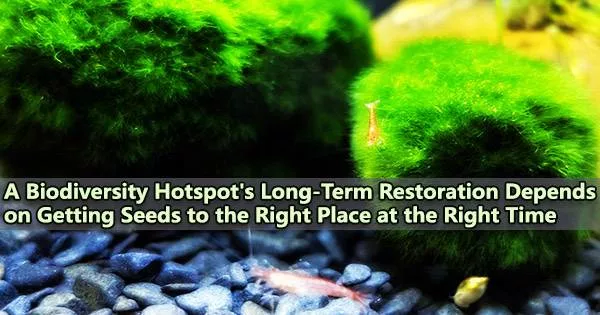A simple first step is perhaps among the most crucial in the quest to restore some of North America’s most biodiverse and endangered ecosystems.
According to a recent study, a single seeding of native understory plants can have a long-lasting positive impact on damaged savanna ecosystems. The study, which was just published in the journal PNAS, highlights the long-term benefits of even a brief period of targeted land management in efforts to repair fallow agricultural fields and other landscapes that have been damaged by decades or centuries of human activity.
The University of Wisconsin-Madison and Michigan State University-led eight-year study was focused on three sizable federal property parcels that were historically part of the longleaf pine savanna ecosystem. Longleaf pine savanna dominated portions of the southeastern United States prior to the arrival of Europeans.
This biodiversity hotspot once spanned some 90 million acres but has largely vanished. Less than 5% of the longleaf pine savanna on the continent still exists, and much of what does is a mere shadow of the formerly pristine ecosystem.
“In a high-quality longleaf stand, you can find over 30 species in a square meter. It’s incredible,” says John Orrock, a professor of ecology at UW-Madison. Orrock and UW-Madison professor Ellen Damschen, an ecologist and conservation biologist, led the study with Lars Brudvig at Michigan State.
There were noticeably fewer plant species present in the longleaf stands when the experiment was first set up than there would be on an undeveloped area.
We can custom tailor the information from these experiments to conservation or restoration practitioners. Depending on what your site is like, we can actually give you better information to increase the likelihood that you’re going to succeed in your endeavor of restoring these plant species.
Professor John Orrock
However, the researchers chose 48 locations that satisfied certain criteria after evaluating more than 230 sites. With the help of these parameters, they were able to determine if elements such as the depth of fallen pine needles or the distance between trees would noticeably influence the ability of native understory plants to establish or persist after seeding.
Following the selection of the ideal combination of locations, the researchers treated some of them with pesticide before sowing seeds from roughly two dozen local native non-woody plant species, such as tall ironweed and sweet goldenrod.
The crew visited the area on and off for eight years to track each species’ establishment progress and, more importantly, their ability to survive year after year.
They discovered that the early success of seeding, including germination and the establishment of healthy seedlings, was somewhat influenced by variables such as needle depth, tree spacing, seasonal temperature, and precipitation.
More specifically, cooler and wetter temperatures as well as shallower needle depth and wider tree spacing encouraged better establishment. These latter circumstances replicate the ecosystem’s typical state, which includes recurrent low-intensity wildfires that destroy leaf litter and young trees. The group discovered that the establishment was unaffected measurably by preventative herbicide sprays.
With one exception, environmental conditions had little impact on the long-term sustainability of the diversified understory of savanna plants once it had established itself. The association between higher temperatures during the height of the growing season and poorer long-term survival among some species evidences one danger posed by a warming climate.
The long-term study’s findings not only emphasize the dangers of a warming environment but also show that a single addition of native seeds can have definite advantages that continue for years and years.
Because their analysis helps pinpoint the ideal location and time to add seeds, the researchers are optimistic that their findings can assist land managers in allocating scarce resources toward restoration options with the highest likelihood of success.
“We can custom tailor the information from these experiments to conservation or restoration practitioners,” says Orrock. “Depending on what your site is like, we can actually give you better information to increase the likelihood that you’re going to succeed in your endeavor of restoring these plant species.”
The findings may be beneficial for managing other ecosystems like the oak savanna that historically covered significant areas of Wisconsin and the Midwest, even though they are most applicable to the longleaf pine savanna habitat.
“I see a lot of parallels in the work that we do both here in Wisconsin in tallgrass prairie and oak savanna and longleaf pine savanna in the southeast,” says Damschen. “In fact, many of the species are identical, and the major plant families are extremely similar.”
Looking forward, Orrock and Damschen say they would like to better understand the traits of species and even individual plants that might help them germinate and establish healthy seedlings. Land managers coping with novel and quickly developing environmental conditions brought on by a changing climate may find this kind of knowledge to be extremely helpful.





